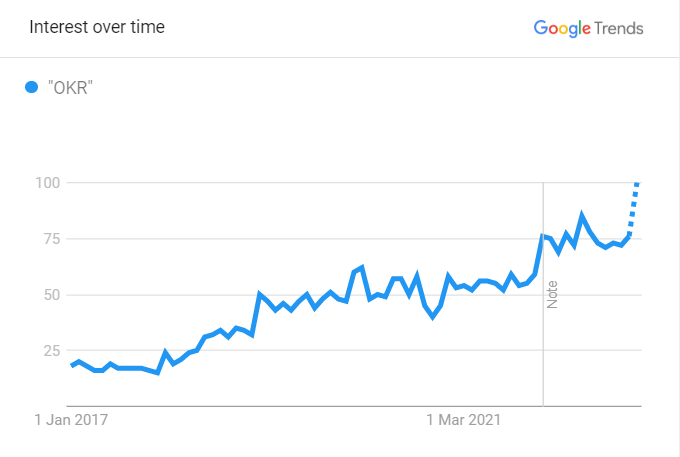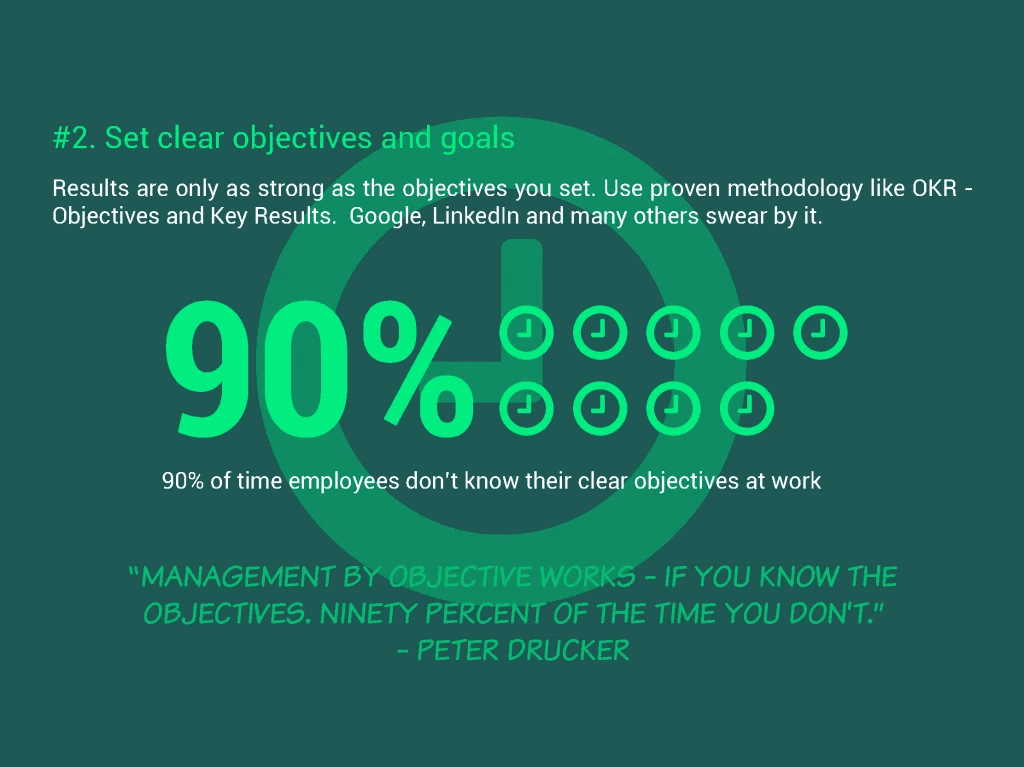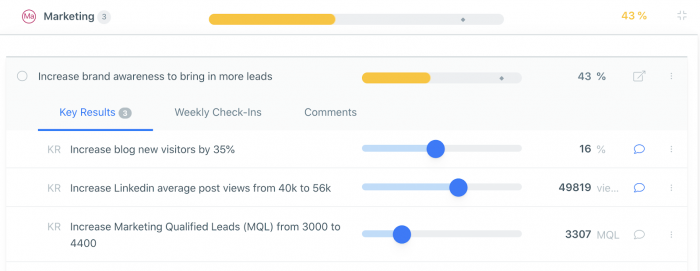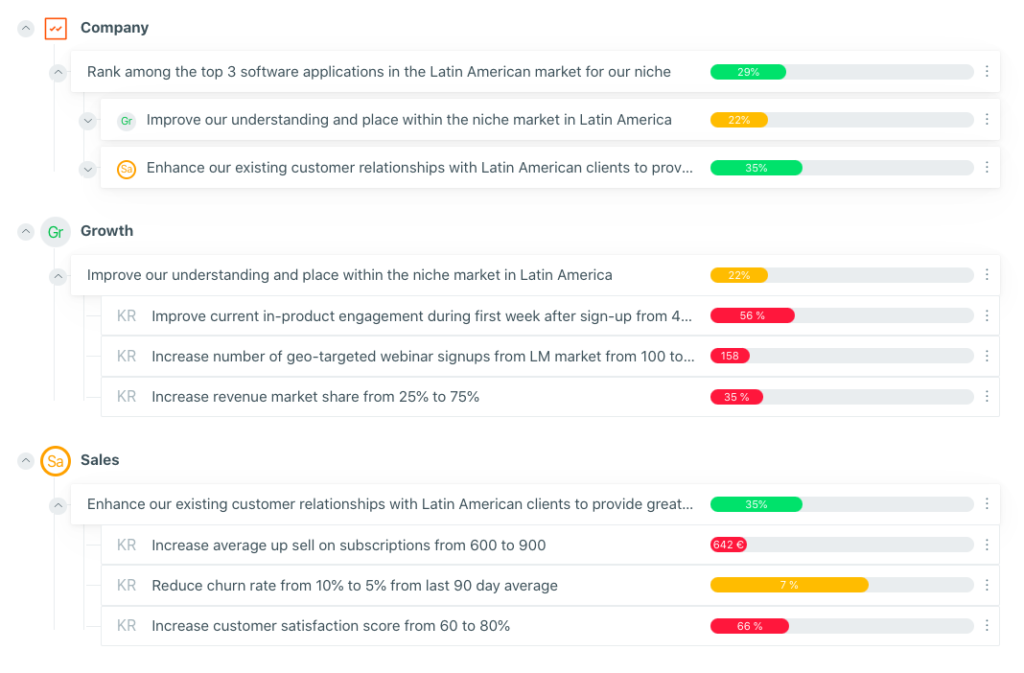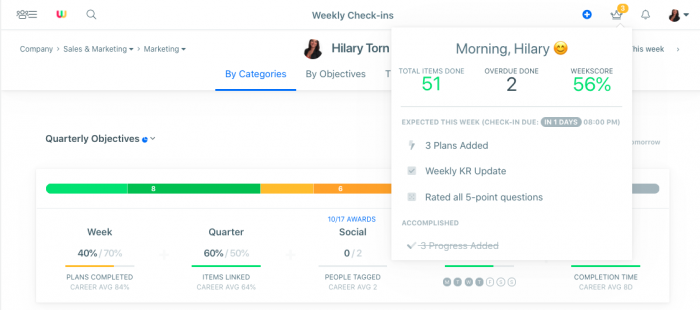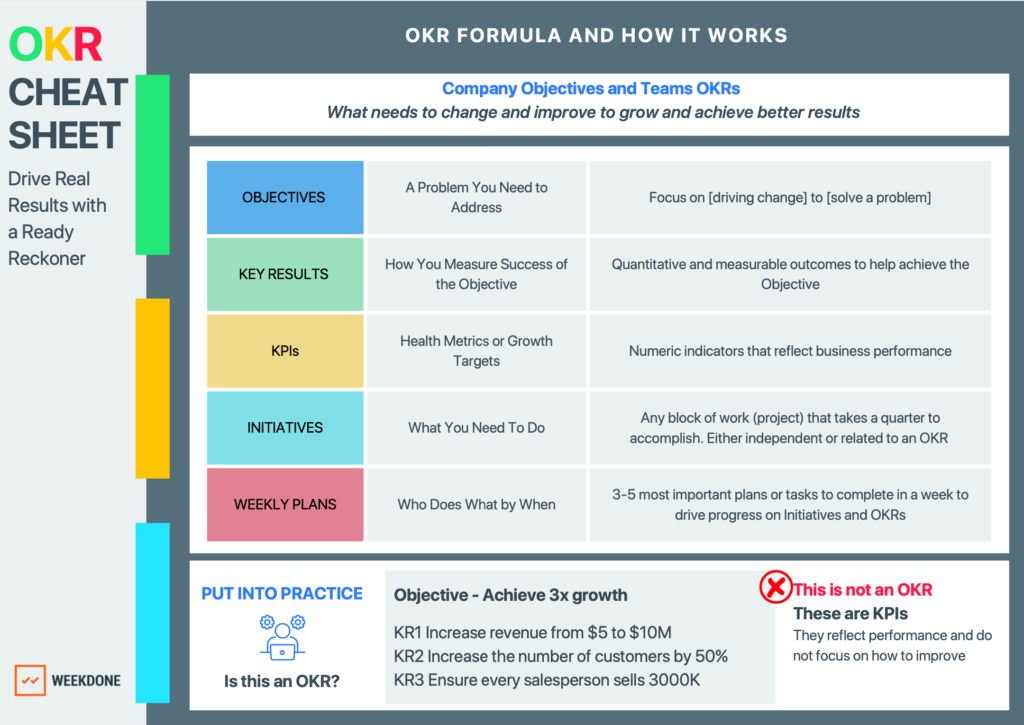Setting aspirational goals is motivating and leads to greater effort. Ambitious goals have proven to have a positive influence on performance and improve productivity.
That’s why the Objectives and Key Results (OKR) framework is viewed as a highly potential solution by best-in-class companies to take goal-setting to the next level.
A Google Trends analysis (2017 to 2023) shows increasing interest in “OKRs” over time, worldwide.
The OKR framework can be simple to understand, but ensuring that everyone understands and is committed can be a challenging task. To make it easier to understand the OKR process and keep in mind the core concepts of OKRs we’ve created a simple OKR Cheat Sheet.
This OKR Cheat Sheet is a ready reckoner that gives you an overview of the OKR framework:
- The OKR Formula and how it works
- Definition of OKRs and the outputs that drive them
- Mistakes to avoid when launching OKRs
- Exercises to put your learning into practice
How does this OKR Cheat Sheet help?
- Quickly understand the basics of the OKR process
- Keep OKR best practices top-of-mind
- Share it with your teams – get everyone on the same page
When implementing OKRs many things can go wrong – from drafting mediocre OKRs, and not defining metrics to measure KRs, to not aligning OKRs company-wide.
Overcome 6 OKR Planning and Implementation Challenges
Creating OKRs and implementing them successfully requires a deep understanding of the basic concepts and a goal-driven mindset. Here are some of the stumbling blocks to look out for and the tips to overcome them:
1. Confusing Company Objectives with KPIs
A Company Objective is a statement that defines the strategic focus area. While increasing revenue seems like an Objective it is in reality a KPI target and performance level you want to achieve.
💡Pro-Tip
When drafting the Company Objective remember to focus on outcomes, not output. This way, it brings focus on improvement areas that can help achieve the goal.
📚 How do you write good OKRs? Keep the focus on outcomes. Learn more about how to write quality OKRs and set good key results.
2. Not communicating company goals
Finalizing high-level goals without taking into consideration the opinion of the rest of the company can lead to unrealistic and unattainable OKRs.
💡Pro-Tip
Ensure that strategic priorities are communicated and bottom-up feedback is included in the OKR process so that goals are validated.
📚 How do you communicate your company’s vision to employees? Here’s a helpful guide.
3. Creating too many Objectives and Key Results
Creating too many OKRs for a team does not necessarily mean that you are achieving more. Having too many OKRs can detract focus from priorities and could lead to low performance.
💡 Pro-Tip
While the number of OKRs depends on your business needs, the best practice is “less is more”. Ideally, at the company level, you can have 1 to 4 Objectives and 3 to 7 Key Results, while for teams it is best to have 1 Objective and 3 to 5 Key Results for every quarter.
📚 How many OKRs are too many? Learn some of the best practices when setting OKRs.
4. Not creating measurable Key Results
Many companies mistake a Key Result for tasks to be achieved. Good KRs have measurable metrics that help define the success of achieving objectives.
💡Pro-Tip
Keep in mind that a key result needs to be quantifiable, actionable, time-bound, and achievable (challenging but not impossible to achieve). They are not binary tasks to be completed.
📚 What are good Key Results for OKRs? Get more information about how to create a key result that can deliver measurable results.
5. Cascading goals instead of aligning them
Several teams make the mistake of cascading OKRs by translating high-level goals into OKRs for various departments, teams, and individuals. This approach does not work because it focuses on output, lacks clarity, and could be demotivating by not reflecting the business value of the goals.
💡Pro-Tip
Achieving goals requires OKRs to be aligned – the team and individual objectives must be aligned with the overarching Company Objective. The best approach is to combine a bottom-up and top-down feedback loop to align and validate OKRs.
📚 How to simplify OKR alignment? An easy way to align the team and company goals is to use a dedicated OKR software platform to help visualize all OKRs and link them using an aligned hierarchical tree view.
6. Adopting, setting, and forgetting about OKRs
Another common oversight made by most teams is when they set goals and fail to regularly monitor and review their progress. Ideally, updating the progress and reviewing OKRs weekly can help identify improvement opportunities and roadblocks.
💡 Pro-Tip
Weekly check-ins help keep OKRs on track and can imbibe a goal-driven mindset. The most challenging aspect of setting goals is keeping track of progress and what needs to be accomplished. Understand how to measure and track OKRs and use the best practices to stay on course.
OKR Cheat Sheet To Drive Better Goal Setting
Whether you are an OKR Champion or a beginner, it can be easy to lose focus when creating and implementing goals. In different stages of planning, drafting, implementing, and reviewing OKRs, a cheat sheet can serve as a constant reference.
Heré’s an overview to understand how an OKR Cheat Sheet can help in different stages of your goal-setting journey:
Planning and Drafting Stage
Successful OKR implementation is based on knowing the definition, distinction, and interdependency between goals, objectives, key results, initiatives, and KPIs.
Implementation Phase
When setting and launching OKRs there are many aspects to consider – from alignment, and setting the right metrics to consistent monitoring.
Review Stage
Evaluating the progress of your OKRs is an important aspect of deriving the maximum value of the framework.
Keeping this cheat sheet handy can reinforce the best practices of OKR when planning, implementing, and improving your goals.
Your OKR cheatsheet download
Whats on the sheet?
- The OKR Formula and how it works
- Define Objectives, Key Results, KPIs, Initiatives, and Weekly Plans?
- Questions to create good Objectives, Key Results & Initiatives
- OKR do’s and don’ts
- What does the quarterly OKR process entail?
- Put your learnings into practice
Whether you have all the tools at your disposal – from templates, examples, spreadsheets, and guides, to an OKR cheat sheet – OKR implementation can get complicated if not executed thoroughly.
That’s why many companies use dedicated OKR software platforms to stay on track in their goal-setting journey. See for yourself how setting OKRs and goal-setting can be easier and more efficient using an OKR application.
